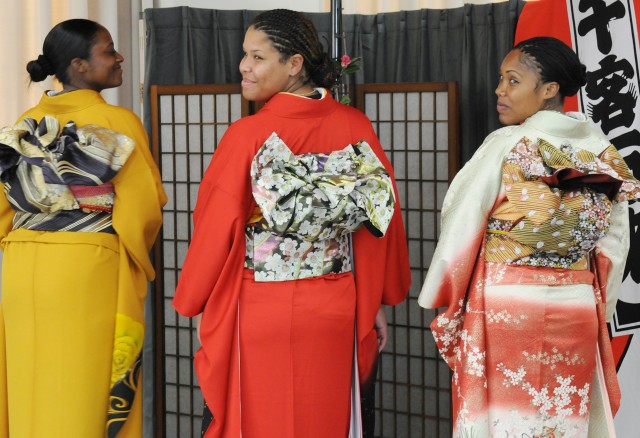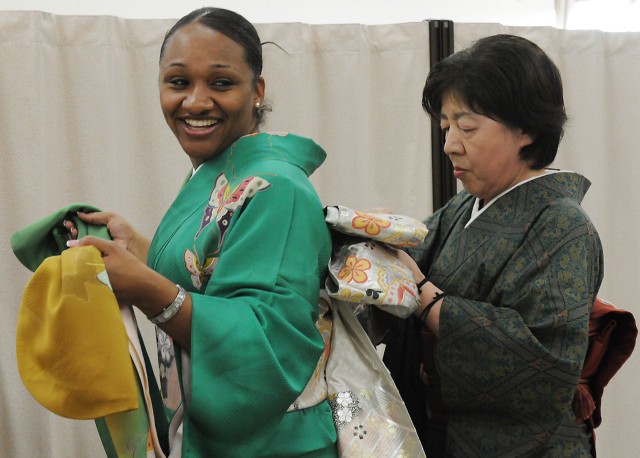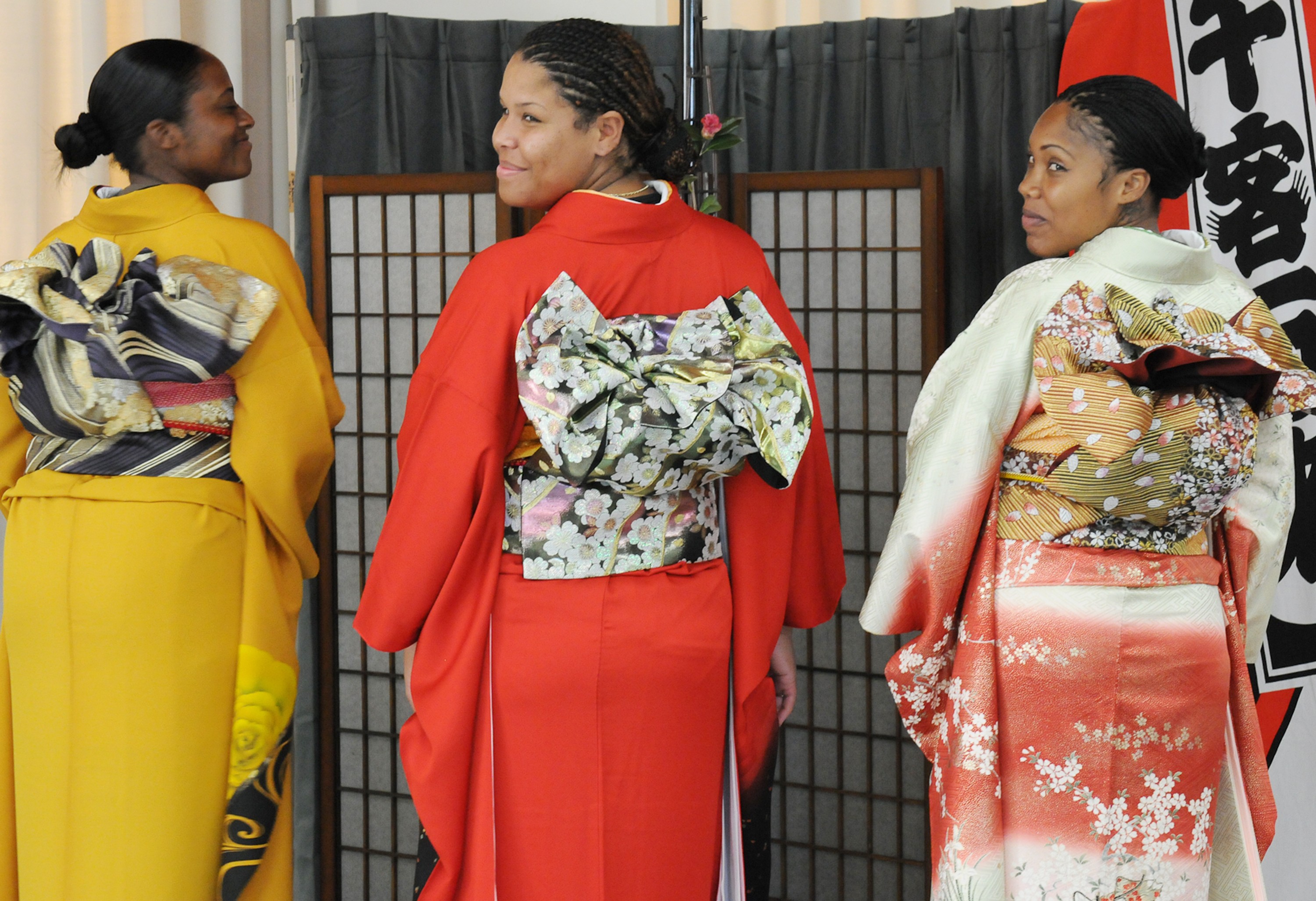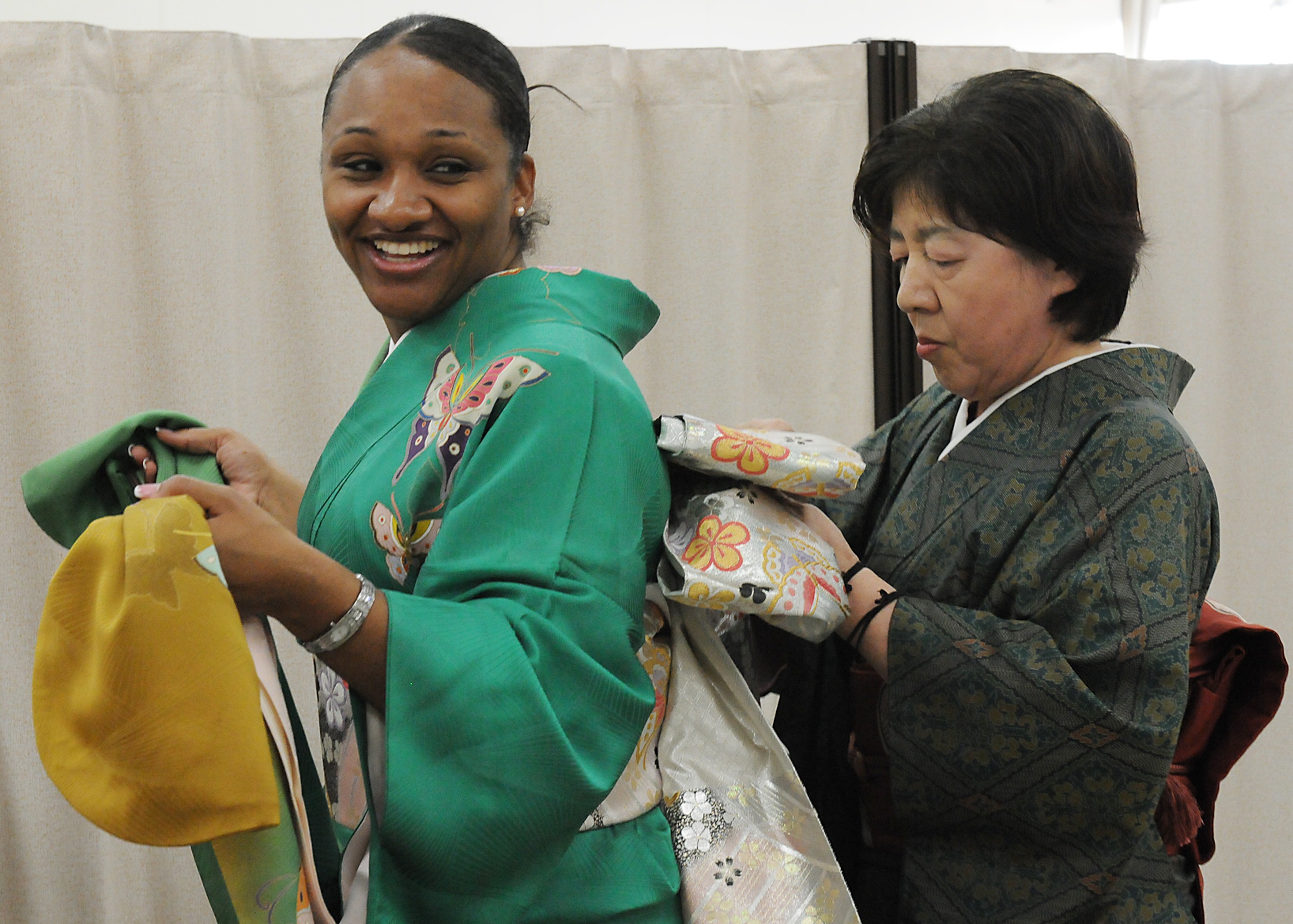KUMAMOTO, Japan (Jan. 26, 2011 -- U.S. military members preparing for Yama Sakura 59 had the opportunity to dress in traditional Japanese kimonos as part of a cultural exchange Jan. 25 in Kumamoto, Japan.
Yama Sakura is an annual, bilateral exercise with Japanese forces and the U. S. military. Yama Sakura's purpose is to enhance U.S. and Japan combat readiness and interoperability while strengthening bilateral relations.
One way to build good relationships is through cultural exchanges, such as learning about the kimono tradition. The kimono, a long flowing robe with wide sleeves that wrap around the body with a sash tied in back, is worn by men and women on special occasions. The family crest adorns the back of the garment.
As the Soldiers donned the garments with help from Japanese women, the interpreter explained the wrapping procedure and tying the sash.
"Not everyone can say they visited Japan and had the privilege of wearing an authentic kimono," said Spc. Dawn Starks, 40th Infantry Division, California National Guard. "It is important to know the culture of our counterparts because it improves our working relationship while strengthening the bond and alliance between our countries."
Other cultural traditions Soldiers have enjoyed are floral arranging, calligraphy and a traditional tea ceremony. These events are designed to educate U.S. servicemembers on their counterparts' lifestyle. In addition to learning about Japan's ceremonial rituals, servicemembers have visited architectural monuments, museums and explored the countryside around Kumamoto.
"I am really looking forward to learning as much as I can while here in Japan," said Spc. Delilah Hill, a human resource specialist with the 40th ID.
This year marks the 29th year of training as dedicated partners in support of the U.S.-Japan security alliance for peace and stability in the Asia-Pacific region. Roughly 1,500 U.S. personnel and 4,500 Western Army soldiers are participating in Yama Sakura. U.S. units include USARPAC, I Corps (Forward), U.S. Army Japan and I Corps, Joint Base Lewis-McChord, Wash.
Related Links:
Army.mil: Asia and Pacific News
STAND-TO!: Exercise Yama Sakura 59






Social Sharing